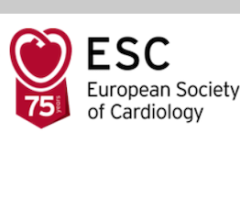
February 28, 2022 – The normal functioning of human body requires a steady flow of energy. This energy in the form of adenosine triphosphate (ATP) is produced by breaking down carbon sources like glucose, lipids, or amino acids. The tricarboxylic acid (TCA) cycle, one of the most important ATP-producing processes in the mitochondria, is a major hub of metabolites and is known for ensuring a fine balance between its cyclic intermediates, referred to as the 'metabolic flux.'
There is a general consensus that this metabolic flux is impaired in heart-related disorders. A common example is myocardial ischemia (MI), a condition in which blood flow to the heart is reduced, preventing the heart muscles, or cardiomyocytes, from receiving enough oxygen. While it is well understood that MI is marked by decreased ATP synthesis and increased glucose breakdown, or “glycolysis,” manipulating the complex TCA cycle to develop treatment options is extremely difficult.
In the past, Ginkgo biloba L. extract (GBE), which contains the active component bilobalide, has been used as a popular herbal medicine in the treatment of ischemic heart diseases. However, the exact mechanism through which it exerts anti-ischemic effects is still unknown. A group of scientists led by Prof. Jinlan Zhang from China's Institute of Materia Medica successfully uncovered the science behind the metabolic flux regulation of MI and how GBE protects the heart from this condition in a new study. “GBE's regulation of energy metabolism attracted our attention because the heart works continuously and needs energy to power the circulatory system,” said Prof. Zhang.
The study, which was published in the Journal of Pharmaceutical Analysis, reveals how carbon transfer from glycolysis to the TCA cycle is blocked in MI-affected cardiomyocytes. This paper was made available online on 26 August 2020 and was published in Volume 11 Issue 6 of the journal in December 2021. To mimic the MI conditions, the scientists used isoproterenol (ISO) injured cardiomyocytes and investigated them using a combination of metabolic flux analysis and Seahorse tests. They discovered that the TCA flux was clearly disturbed in these cells, which preferred to use alternate carbon sources rather than glucose to provide a constant supply of energy. Despite this, the blockage and impaired ATP production could not be averted in the injured cells.
They found that ischemic cardiomyocytes contained larger quantities of enzymes that converted carbon sources to metabolites, both before and during the TCA cycle, which might have caused the metabolites to accumulate and disturb the metabolic flux, since they could not enter the cycle in excess.
Interestingly, on treating the injured cells with GBE, the authors found that the active ingredient bilobalide could protect the mitochondria and preserve ATP generation. The enzyme levels in the treated cells went down and prevented metabolite accumulation, enhanced metabolic flux, and reduced the pressure on heart cells. The modulation of metabolic flux in GBE treated cells works by lowering accumulation of TCA cycle intermediates, which is different from previously reported mechanisms.
Testing the efficacy of bilobalide in a rat model of MI yielded similar results. This time they not only checked the enzyme levels, but also examined the myocardial tissue of GBE-treated rats, which showed less MI damage signs than untreated tissue samples. The findings were consistent with those of the ISO-injured cells, indicating that bilobalide protects the heart muscles.
Although metabolic drug research in MI has recently gained traction, success is still a long way off. The results of bilobalide treatment obtained in this study not only provide more evidence of MI's metabolic pathology, but also provide inspiration for new herbal therapies.
"MI is a major risk to human health around the world and elucidating its pathophysiology and potential therapeutic treatments is essential," Prof. Zhang said. “Our findings appear promising, and we expect to draw inspiration from this research into the metabolic mechanism and material basis in the therapy of MI," she concluded.


 January 10, 2026
January 10, 2026 









